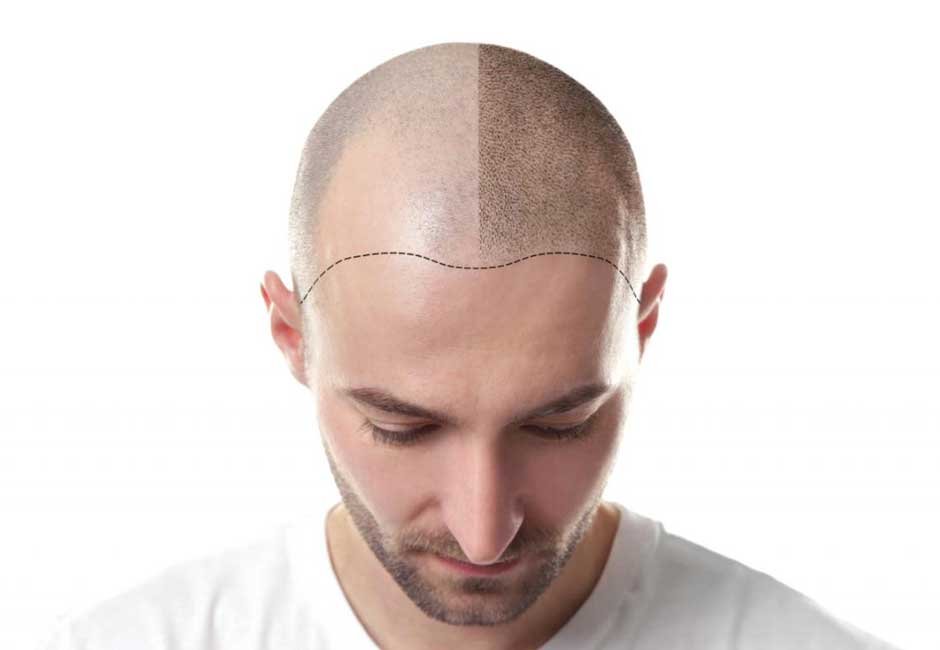Micropigmentation is a cosmetic procedure that helps clients to enhance the shape of their hairline. The procedure involves depositing pigment into the dermal layer of the skin. The treatment is smudge-free and is great for individuals experiencing hair loss, alopecia, chemotherapy, and more. Micropigmentation is a safe, modern procedure with many benefits.
How Is Micropigmentation Performed?
Micropigmentation is a form of permanent makeup, similar to a tattoo. It mimics the appearance of stubble or recently shaved hair. The procedure is performed by inserting pigment into the skin using a thin, small applicator. The aim is to lightly contour and enhance the hairline or other desired areas.
Micropigmentation differs from typical tattoos; it is less invasive and uses a different pigment than the one used in tattoo ink. The procedure is done in a single sitting, meaning you’ll go home the same day. Most clients require several appointments for the most realistic-looking results.
Micropigmentation is completely safe. Your practitioner and consulting team will be professionals at the procedure and will be sure to help you feel confident and comfortable.
The Right Candidates for Micropigmentation
Micropigmentation is great for:
- Beard enhancement
- Restoring receding hairline
- Scar camouflage
- Restoring area pigmentation in individuals who have undergone breast construction surgery or chemotherapy
- Replacing thinning eyebrows
Permanent cosmetics can also serve medical purposes. Appropriate candidates for this procedure include:
- Individuals with blood disorders, vitiligo, diabetes, hepatitis B or C, dry eye syndrome, or lupus
- Those with active skin disorders like herpes simplex, pink eye, or warts
- Individuals with soft-tissue fillers
What Happens After the Procedure?
After treatment, you may experience tenderness in the treated area. Your practitioner will advise you if you need to apply ice on the area and may recommend using ointment to reduce any swelling. They may also give you an antiseptic to clean the area. While your skin is adjusting, avoid excessive exposure to sunlight and avoid using products with harsh chemicals.
The coloring can appear more intense after the procedure but will gradually fade in a few weeks. Contact your practitioner immediately if you develop a rash, fever, burning sensation, or swelling in the area after treatment.
Follow-Up Care After the Procedure
You may need several treatments to get the desired results. Find out in advance how many treatments you’ll require for the procedure you need. The pigment will fade as the years go by, and you may need additional treatments to maintain your look.
This procedure lasts several years. Over time, some of the pigment gets absorbed by the skin; you may need further treatment to keep the pigmentation more defined.
Is the Procedure Permanent?
The ink fades over time due to the replacement of skin cells that constantly occurs, but it never washes off. Think of micropigmentation as permanent because it’s difficult to remove. The benefit is that you can enjoy the appearance of healthy hair follicles with minimal maintenance.
What Research Should You Do Beforehand?
Find a practitioner with experience in micropigmentation to get the desired results. Arrange for a consultation and discuss your expectations. Be honest about your desired look so your practitioner understands your concerns.
Request to see the artist’s credentials and find out how long they have been performing micropigmentation. Such a practitioner will let you know if your expectations are realistic and whether you are a good candidate for the procedure. Ask to see before and after photos of previous clients for reference.
Find out the type of anesthesia they will use for the procedure. Ask them about any risks and complications of the specific procedure you are interested in and how they handle those complications. A good practitioner will be a clear communicator.
After your initial consultation, they will examine your skin for complexion, tone, and texture to select the right pigment. They will also ask about your past surgeries, medical conditions, history of allergies, and any medications that you are taking.
Look for the Best Micropigmentation Practitioner
Find a micropigmentation practitioner with a reputation for providing clients suffering from hair transplant scarring, balding, and hair thinning the most natural results. They need to have many years of experience treating thousands of clients. Such a practitioner will understand the importance of color matching and hairline designs for clients.
Prioritize a practitioner known for approaching each client as a new canvas. They should have a wealth of knowledge to help anyone start their micropigmentation process.






